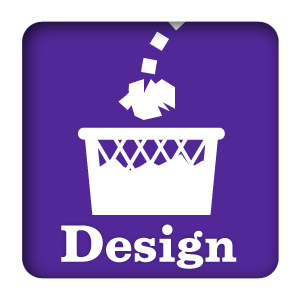It’s here, Applegeddon 2017, the annual Fall blow-out of products. This year we expect to see Apple take another swing at the Apple Watch, the next generation of the iPhone, the next “next gen” iPhone, an Apple TV bump and have our memories refreshed on the HomePod and iOS 11.
Making Apple predictions is no longer much fun. Iterations of existing hardware products are remarkably easy to predict thanks to leaks and known component upgrades within the industry. It’s also lost some its wonder as Apple’s innovations often appear to add features that have dubious utility. The company’s definition of innovation feels more cynical every year, more focused on increasing revenue than cool stuff.
That why this year’s product introduction will largely hinge on the success two features: security face-recognition and LTE watch features.
With the new iPhones, it appears that Apple is going to launch both a progression of the existing iPhone 7 and a “next gen” iPhone alongside it. Cases and official graphics have already leaked, giving us very good ideas of what these new phones will look like.
The improved iPhone 7 comes in the current iPhone 7 physical sizes and shapes, with what will likely be a very similar set of features. Few leaks have dealt with iPhone 7 details, however Apple’s track record shows a history of improvements in battery life, better quality screens and improved cameras in the iterative releases. They might even shave off .01 ounces and .01 mm of thickness and spend five minutes talking about it in the presentation. That’s their jam.
What many are dubbing the “iPhone 8” has also had leaks, regarding both shape and size. It’s major change is in the screen, which is rumored to be the long-awaited debut of an OLED display in the iPhone line. In addition, the “8” has an all-front-face display that stretches almost from edge to edge, with the exception of a “notch” at the top for the forward-facing cameras, sensors and speaker. This also means that Apple has eliminated the home button, and along with it, the fingerprint Touch ID sensor.
To replace the functions of the home button, leaked versions of iOS indicate that gestures on screen will replace the button, and many people have noticed that the side-mounted power button in the “8” is almost twice as large as the 7, which could indicate some kind of extra functionality. Whatever the means, the home button has been a fixture (literally) of all smartphones since the category emerged, and getting rid of it will require Apple to show how one of the most basic and intuitive interface elements of the device can be replaced without causing issues for users.
In addition, the loss of the Touch ID sensor means that the Apple Pay touch-and-pay dynamic is about to change. Software leaks once again point to the use of a face recognition to replace the fingerprint technology, although so far, no face recognition technology in a phone has proven to be popular or practical. The Touch ID system has proven to be reliable and convenient, and changing that system has inherent risks in terms of user adoption, so any early reports of the face recognition system glitching or being faked out may tarnish the new phone.
If Apple can make the case that having an all-screen front for the iPhone outweighs any new inconvenience, then the “8” will have but a single hurdle to clear, and that is the existence of a second-tier iPhone that will likely go for a premium price. The previous experiment with a two-tier price structure did not go well for Apple, with the iPhone 5c, which despite heavy promotion, had mediocre sales. If a premium product doesn’t make a good case for why it’s more expensive consumers, can feel betrayed when they are asked to pay more for features that they don’t want or see much value in.
The second star of the presentation is likely to be the Apple Watch “Series 3.” There hasn’t been any hardware leaks, but software leaks point to the existence of an Apple Watch that will include LTE functionality. As of right now, there is some debate if the “3” can handle calls by itself or just use LTE for data functions. Either way, this LTE watch will likely be with first Apple Watch to not require the close proximity of an iPhone for full functionality.
If the watch does include LTE, then the watch can replace a phone for some of the basic traditional phone functions. It can make and receive calls though headphones, play from your iCloud music library, track fitness, and receive messages. For some users, an iPhone would not be necessary most of the time. Really, an iPhone becomes a big screen watch for those users.
There have to be a certain sub-set of users who feel shackled by a phone, but carry it out of modern necessity. For them, the Apple Watch may be a sufficient replacement they can use most of the time. However, the Watch still appears to be an iPhone accessory, in the the Apple Watch is inadequate for text messaging, and we still may see some kind of tethering with the iPhone for using the cellular phone number in a second device. Although many people have seen the Apple Watch as a successor or alternative to the iPhone, Apple itself doesn’t appear to be positioning it that way.
What Apple will need to prove is that using LTE on a watch is worth paying a little extra for the plan, and the watch itself is worth buying, wearing and maintaining. If you were inclined to use anything like an Apple Watch, chances are you’ve already taken the plunge on it, and it will be difficult to recruit new Apple Watch buyers even with calling features. Likely Apple needs to continue pushing the health features to get new users.
So it will come down to two crucial elements for this year’s Fall extravaganza: Will people want an LTE watch for more money and will folks want a more expensive iPhone with some familiar elements replaced? And even then, can a premium iPhone model not alienate people who go for the “normal” iPhone? It will all come down to salesmanship, market presence and economic factors.
Like I said, a lot of the fun has gone out of predicting Apple’s moves. Wheee.










